explore
Jungle Lowlands - Politics
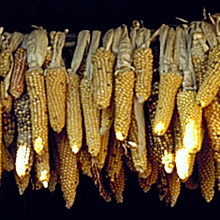
The beginning of settled life in Mesoamerica occurred some time around 5000 B.C. with the domestication of maize, beans, and other crops. By 600 B.C., agricultural communities settled in the jungle lowlands. New residents found a wealth of materials and resources that allowed for the growth of villages into towns and cities. More wealth and more people led to the development of long-distance trade, and the importation of exotic goods such as obsidian, jadeite, serpentine, and basalt.
Image: Maize, the great staple crop of Mesoamerica
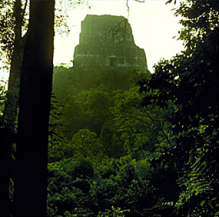
By the Late Preclassic period (400 B.C. - A.D. 250), huge monuments and temples were commissioned by leaders. Urban centres became the hub of government policy, organized military units, and the administrative and religious hierarchy filled by ruling elite families. Populations grew around city-centres, and social distinctions led to wider gaps between the elite and the less privileged. This period marks the beginnings of monumental inscriptions, and the production of polychrome pottery.
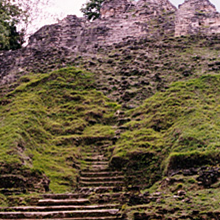
First constructed in Late Preclassic times and modified and used well into the Classic Period, N10-43 (High Temple) at Lamanai, is still one of the tallest buildings in the modern country of Belize at some 30m in height. All other edifices in the country that are taller still were also constructed by the ancient Maya more than 1000 years ago.
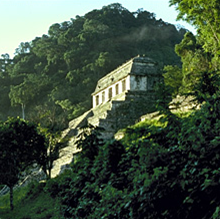
Great cities arose in the jungle, Tikal being most notable for its size and architecture. Other large cities in the heart of the Jungle Lowlands, such as Uaxactún and Caracol became powerful centres which formed links with other, farther flung municipalities in the Maya area, such as Palenque in the west, Uxmal to the north and Copán to the southeast. Networks stretched beyond the Maya realm and deep into Mexico. Teotihuacan, an immense city state in Central Mexico, was the most influential foreign power for the Maya between A.D. 400 and 700.
Image: The Temple of Inscriptions at Palenque, Chiapas, Mexico.
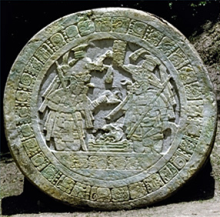
The political landscape of the Classic era in the lowlands is revealed in the architecture, erected monuments, murals, human burials, caches of stone tools and ceramics. Analysis of the archaeological evidence and the information deciphered from ancient Maya texts, reveals a society ruled by a small but powerful elite. Regional Maya states existed in an ever tense political environment surrounded by rivals and allies, superiors and vassals. Constant tributes, conflicts and sacrifices maintained an uneasy balance of power between the largest rivals for many centuries.
Image: Altar 5, at Tikal, Guatemala. Carved in the centre are two figures kneeling beside an altar.
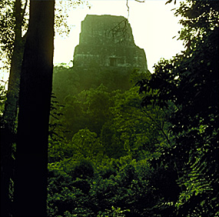
By the Terminal Classic period (A.D. 950), several large city centres in the Jungle Lowlands were abandoned. There has been much speculation about the causes; possibilities include environmental degradation, drought, disease, overpopulation, warfare and political instability.
However, it has become clear that the collapse, while widespread in the Jungle Lowlands, was not complete. Construction at Lamanai, for example, continued well into the Postclassic while centres like Tikal had long fallen into ruin. There were in fact Maya still living at Lamanai when the Spanish arrived there around 1544. Continued work in the region will undoubtedly shed new light on this transitional period in ancient Maya politics.